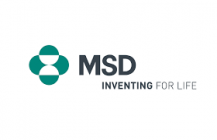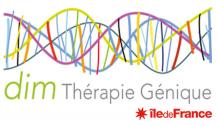
Am. J. Hum. Genet. 2017
Publish at 18.11.2019
Mitochondrial diseases are characterized by a huge clinical and genetic heterogeneity and the mitochondrial and nuclear disease causing genes have been identified in only 20% of cases. Moreover, there is almost no therapy for these devastating diseases.
Therefore our objectives are :
1. to identify new nuclear genes responsible for mitochondrial dysfunction in human for a better understanding of its heterogeneity,
2. to decipher the physiopathology of these diseases,
3. to develop gene therapy for some of them in mouse models,
4. to improve our understanding on the replication of mitochondrial DNA during embryo-fetal development.
The number of disease-causing mutations in mitochondrial diseases is constantly growing but it should be borne in mind that no mutation has been identified in 70% of the patients. The clinical and genetic heterogeneity of these diseases as well as the large number of candidate genes (1000-2000) make the identification of these genes more and more difficult. Indeed, we are now facing a large number of sporadic cases. Therefore, next generation sequencing has been proved to be the best approach to identify new disease genes. We are doing whole exome and genome sequencing and RNAseq to identify novel genes. Depending on the function of the mutant genes various approaches will then be developed with the aim to validate the pathogenicity of the mutations.
Eukaryotic cells contain a large number of copies of maternally inherited mtDNA. Very few data are available with respect to mtDNA replication during human oogenesis and embryogenesis, both in wild-type individuals and carriers of mtDNA mutations. Most of the data were obtained in animals and are sometimes contradictory. The lack of data on mtDNA replication during embryo-fetal development hampers to propose fully reliable pregestational and prenatal diagnosis to couples at risk to transmit mtDNA mutation. Our project aims at studying when and how normal and mutant mtDNA replicates throughout embryofetal development in human. In order to get an insight into these questions, we have collected a large number of human samples from control and mutant adult females (gametes and somatic cells), control and mutated embryos, fetuses and placentas. Using these samples, we shall assess the mtDNA copy number and mutation rate, the mtDNA replication, and the expression level of both mitochondrial genes and nuclear genes involved in replication and transcription of mtDNA, at the single cell level.
Friedreich ataxia (FRDA) and Neurodegeneration with Brain Iron Accumulation (NBIA) are rare neurodegenerative diseases sharing iron accumulation in specific brain area. Friedreich ataxia (FRDA) is an autosomal recessive neurodegenerative disease associating cerebellar ataxia and hypertrophic cardiomyopathy. FRDA results from mutations in FXN encoding frataxin, a mitochondrial protein. NBIAs are characterized by movement disorder, dystonia, mental disability and early death and results from mutations in various genes involved in CoA synthesis, lipid metabolism, mitochondrial function and autophagy. Both diseases share a similar deregulation of iron homeostasis and we now aim to better understand the pathophysiological mechanism of these diseases and to decipher the mechanism of iron accumulation by using patients’ fibroblasts and cellular models and to possibly design drugs for both diseases. Furthermore, we are developing AAV9-based gene therapy in FRDA.
Leigh syndrome is the most common neurological disease in children with mitochondrial diseases. It is characterized by spongiform lesions in the brainstem and the basal ganglia. However, given the ubiquitous expression of Leigh syndrome genes, its highly tissue specificity remains unexplained. The mitochondrial RNA stability factor LRPPRC is one of the genes linked to Leigh syndrome. We have developed and are currently characterizing several mouse models for LRPPRC deficiency in order to understand the pathophysiology and tissue-specificity of Leigh syndrome. These models are also being used to develop a gene therapy cure for this pathology.
We have recently identified mutations of MIPEP, a protease allowing cleavage of an octapeptide sequence of some mitochondrial proteins. The function of MIPEP is not well known and our project is to identify the substrates of MIPEP and the importance of this protein in OXPHOS biogenesis and mtDNA maintenance.

Head of laboratory

responsable

Researcher (CR - INSERM)

Post-doctoral researcher
Chargée de recherche Inserm

PU-PH

PU-PH

PU-PH

PU-PH

Post-doc
Engineer
Ingénieur d'étude
Ingénieure
Ingénieur
Etudiante Master
Ingénieur
Etudiante Master 2
PH Carammel

Am. J. Hum. Genet. 2017

J. Med. Genet. 2019

Am. J. Hum. Genet. 2018

Am. J. Hum. Genet. 2018

Am. J. Hum. Genet. 2018

Nat Commun 2018

J. Med. Genet. 2018

Am. J. Hum. Genet. 2017

Am. J. Hum. Genet. 2017

Am. J. Hum. Genet. 2017

Eur. J. Hum. Genet. 2017

Am. J. Hum. Genet. 2017

Am. J. Hum. Genet. 2017

Am. J. Hum. Genet. 2017

Am. J. Hum. Genet. 2017








